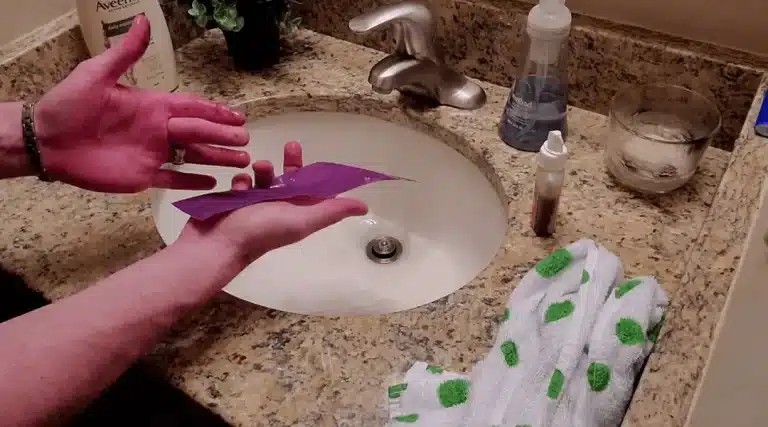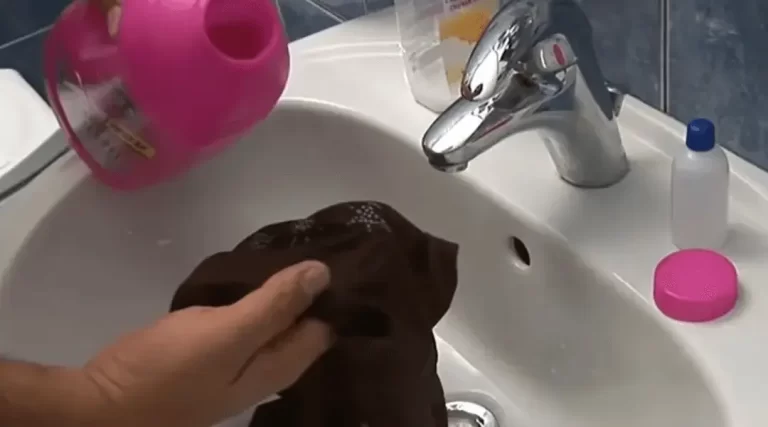Have you ever experienced the sudden pain and shock of losing a tooth due to an accident or injury? If so, you may be wondering if a dentist can glue your tooth back in.
The good news is that in many cases, a dentist can reattach a tooth using dental bonding techniques. Dental bonding involves using a special adhesive to bond the tooth back in place. This procedure is typically used for teeth that have been knocked loose or partially dislodged.
However, it’s important to note that not all teeth can be reattached and the success of the procedure often depends on the severity of the injury and how quickly you seek treatment.
In this article, we’ll explore the different techniques used for dental bonding, as well as other treatment options, preparing for the procedure, aftercare and recovery, risks and benefits, and cost and insurance coverage. By understanding these factors, you can make an informed decision about whether tooth reattachment is the best option for you.
Dental Bonding Techniques
You can use dental bonding techniques to restore a broken tooth. This is a cosmetic dentistry procedure that involves applying a tooth-colored resin material to the tooth surface. The resin is then shaped and hardened with a special light, which bonds it to the tooth.
Dental bonding is a quick and painless procedure that can be done in a single visit to your dentist. It’s a great option for repairing small chips, cracks, or gaps in teeth. However, if the damage to your tooth is more severe, there are other treatment options available.
Other Treatment Options
Just like a skilled craftsman repairing a broken vase, there are alternative methods available to restore a damaged tooth. While dental bonding may be an effective option, there are other tooth replacement options that may be better suited for your specific situation.
Here are four tooth replacement alternatives to consider: dental implants, dental bridges, partial dentures, and full dentures. Dental implants are a long-lasting and natural-looking solution that involves a titanium post being surgically inserted into the jawbone and topped with a dental crown. Dental bridges use neighboring teeth to anchor a prosthetic tooth in place, while partial and full dentures are removable options that can be customized to fit your mouth.
If the damaged tooth cannot be saved, tooth extraction alternatives, such as a dental implant or bridge, may be necessary.
Now that you have a better understanding of your options for restoring your tooth, it’s important to prepare for the procedure.
Preparing for the Procedure
When preparing for the procedure to reattach your tooth, there are a few key things to keep in mind. First, you should expect to spend some time at the dentist’s office, as the process can take anywhere from 30 minutes to an hour.
You may also want to discuss pain management and anesthesia options with your dentist to ensure that you’re comfortable throughout the procedure.
What to Expect During the Appointment
During the appointment, you can anticipate a thorough assessment and potential restoration of the dislodged dental structure. Your dentist will examine the injury site, ensuring there aren’t any broken roots or other oral complications.
They will then prepare the tooth for reattachment, which may involve cleaning and smoothing the surface to ensure a secure fit. The dentist will then apply an adhesive, such as a composite resin, to bond the tooth back into place. The entire process typically takes less than an hour, but appointment duration may vary depending on the extent of the damage.
Afterward, your dentist will provide post-procedure restrictions to ensure optimal healing. As for pain management and anesthesia options, your dentist will discuss these with you during the appointment.
With proper care and maintenance, your reattached tooth can last a lifetime and restore your smile to its former glory.
Pain Management and Anesthesia Options
You may be interested to know that studies show that up to 30% of people who’ve had a tooth reattachment procedure experience some degree of discomfort or pain afterward. But don’t worry, your options for pain management and anesthesia will be discussed with you during the appointment.
Pain management is an important consideration, as it can significantly affect your recovery experience. There are various anesthesia options available, such as local anesthesia, nitrous oxide, and IV sedation, each with its own benefits and risks. Your dentist will discuss these options with you, taking into account your medical history and individual needs.
Additionally, your dentist may also prescribe pain medication to help manage any discomfort you may experience after the procedure. Remember, proper pain management is crucial for a smoother and more comfortable recovery.
In the next section about aftercare and recovery, we’ll discuss some additional steps you can take to support your healing process.
Aftercare and Recovery
Now that your tooth’s successfully repaired, it’s important to take proper care of it. This will ensure a smooth and easy recovery process.
You’ll need to be aware of potential complications and keep an eye out for any changes in the area surrounding the repaired tooth. It’s essential to attend follow-up appointments with your dentist. This will ensure the tooth is healing properly. It will also help you address any concerns or issues that may arise.
Caring for the Repaired Tooth
Maintaining proper oral hygiene after a dental restoration can greatly prolong the lifespan of the repaired area. It’s important to continue practicing good oral hygiene habits, such as brushing twice a day, flossing daily, and using mouthwash.
Additionally, there are certain dietary restrictions that should be followed to prevent damage to the repaired tooth. Avoid hard, crunchy, or sticky foods, as well as chewing on ice or using your teeth to open packages.
It’s also important to schedule regular dental check-ups to monitor the repaired tooth and address any potential issues that may arise. By following these guidelines, you can ensure that your repaired tooth stays healthy and strong.
As you move into the next section about monitoring for complications, it’s important to stay vigilant and address any concerns with your dentist.
Monitoring for Complications
It’s important to keep an eye out for any potential complications that may arise after a dental restoration, as this can greatly affect the overall health and longevity of the repaired area. Complication prevention is key in ensuring that the tooth remains in place and doesn’t become damaged or infected.
Post-repair monitoring is essential in identifying any issues early on, such as swelling, persistent pain, or sensitivity. If you notice any of these symptoms, it’s important to contact your dentist as soon as possible. In addition, be sure to follow any post-procedure instructions given by your dentist, such as avoiding certain foods or activities.
By taking proper care of your repaired tooth and monitoring it closely, you can minimize the risk of complications and ensure that it remains healthy and functional for years to come. With that being said, it’s also important to schedule follow-up appointments with your dentist to ensure that the tooth is still in good condition and that no further treatment is needed.
Follow-Up Appointments
Don’t miss out on follow-up appointments to keep your smile shining bright and avoid any potential complications down the road.
It’s important to schedule regular check-ins with your dentist after a tooth has been glued back in. These appointments will allow your dentist to monitor the healing process and ensure that the tooth is properly reattaching to the surrounding tissue. The frequency of follow-up appointments will depend on the severity of the initial injury and the specific treatment plan your dentist has prescribed.
It’s crucial to attend these appointments to avoid any further complications that could arise from an improperly healed tooth. By keeping up with your follow-up appointments, you’ll increase the likelihood of a successful outcome and maintain your oral health.
Moving forward, let’s explore the risks and benefits of gluing a tooth back in.
Risks and Benefits
You’ll want to weigh the pros and cons before deciding if reattaching a dislodged tooth is the right choice for you. While the benefits of having your natural tooth back may seem obvious, there are potential complications to consider.
First, the success of reattaching a tooth long term is not guaranteed. Additionally, the process can be painful and may require follow-up appointments. However, the main benefit is avoiding the need for more invasive procedures like implants or bridges.
Ultimately, it’s up to you to decide if the benefits outweigh the risks. Moving forward, it’s important to consider the cost and insurance coverage for this procedure.
Cost and Insurance Coverage
If you’re considering reattaching a dislodged tooth, it’s important to examine the cost and insurance coverage for the procedure. Dental coverage varies depending on your insurance provider and plan. Some plans may cover a portion or all of the costs, while others may require you to pay out of pocket expenses. It’s important to check with your insurance provider to understand your coverage options.
Additionally, the cost of the procedure can vary depending on the severity of the injury and the dentist you choose. Factors such as location and experience can impact the cost. It’s important to choose a dentist who is experienced in reattaching teeth and who offers reasonable pricing.
When making your decision, consider the potential long-term benefits of reattaching the tooth, as well as the short-term costs. With careful consideration and research, you can find a dentist who can reattach your tooth at a reasonable cost and with the right insurance coverage.
Moving forward, choosing a dentist who is experienced and knowledgeable in the procedure is essential.
Choosing a Dentist
When it comes to choosing the right professional to perform a reattachment procedure, you want to be sure they have the expertise and experience necessary to give you the best possible outcome.
Finding recommendations from friends and family or doing research online can help narrow down your choices. Look for a dentist who has experience with reattachments and who has the necessary qualifications and training. Don’t be afraid to ask the dentist about their experience and success rate with reattachments.
It’s important to choose a dentist who makes you feel comfortable and confident in their abilities. By taking the time to research and choose the right dentist, you can increase your chances of a successful reattachment procedure.
Conclusion
So, can a dentist glue a tooth back in? The answer is yes, but it depends on several factors.
Dental bonding techniques can be used to reattach a tooth, but other treatment options may be necessary depending on the severity of the damage.
If you’re preparing for this procedure, it’s important to know what to expect. Your dentist will likely numb the area and carefully reposition the tooth before bonding it back into place.
After the procedure, you’ll need to take care of the affected area and monitor for any signs of complications.
One interesting statistic is that dental bonding can last for up to 10 years with proper care. This means that while it may be a temporary solution, it can still provide long-lasting results.
Ultimately, choosing a dentist who’s experienced in restorative dentistry can ensure the best possible outcome. So if you’ve experienced a dental emergency, don’t hesitate to reach out to a professional for help.




